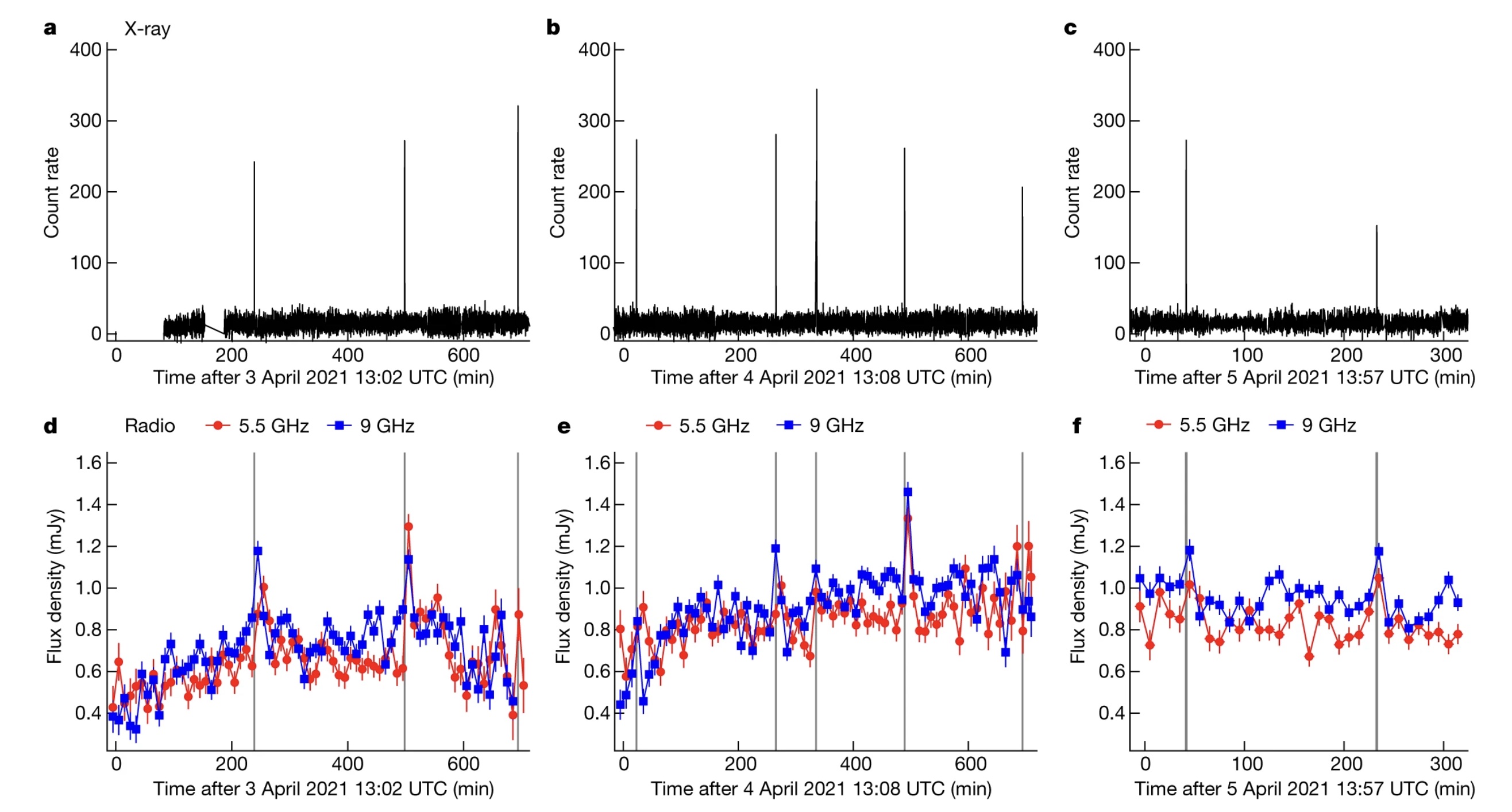| 4th of April 2024 |
|---|
 |
| Thermonuclear explosions on neutron stars reveal the speed of their jets |
| by Russell et al. |
|
Russell et al. monitored the accreting neutron
star 4U 1728-34 with a simultaneous radio and X-ray observing
campaign. The radio observations, which probe the jet emission, were
taken over a 3-day period with the Australia Telescope Compact Array
(ATCA). Radio data were recorded simultaneously at two frequency
bands, 5.5 and 9 GHz. X-ray monitoring, tracing the accretion flow and
detecting the thermonuclear explosions,
consisted of a single long observation with the International
Gamma-Ray Astrophysics Laboratory (INTEGRAL).
Fourteen X-ray bursts occurred during the INTEGRAL monitoring, ten of
which occurred when the source was visible to ATCA. The X-ray bursts
all had a similar duration of roughly 10 secondss, but differed in
peak brightness by a factor of approximately two. Following every
X-ray burst, a clear radio flare was detected minutes later. The
timing of the radio flare peak was frequency dependent; on average,
the 5.5 GHz radio emission peaked ~3.5 min after the onset of the
X-ray flare, before fading back to preburst levels 20–25 min after the
X-ray burst. By contrast, at 9 GHz, the emission peaked ~2.5 mins
after the start of the burst, fading back to preburst levels within
~12 min. The combination of the flare arriving first at higher
frequencies and strong variations between individual flares points to
a jet origin of the radio enhancement.
The figures above show the 3–25 keV count rate in two-second bins for (a) 2021 April 3, (b) April 4 and (c) April 5. The corresponding radio plots show the flux densities of the target during each epoch, measured at 5.5 GHz (red circles) and 9 GHz (blue squares) for 10 min time bins. The timing of the X-ray bursts in the X-ray light curves are shown by the grey vertical lines in the lower panels. For all X-ray bursts clearly defined radio counterparts are found, although for the final bursts of epoch 1 and 2 the data are not as clear owing to the low source elevation and the radio observation ending close to the burst. |